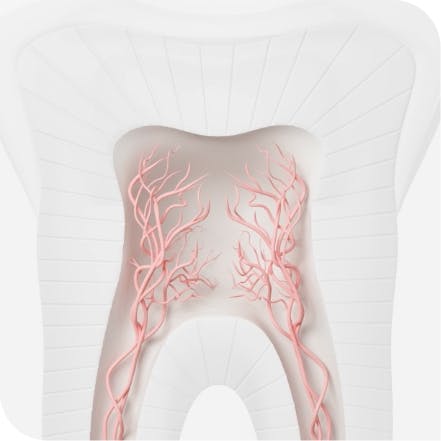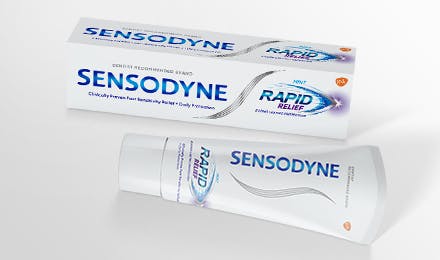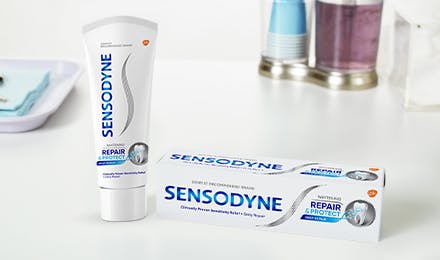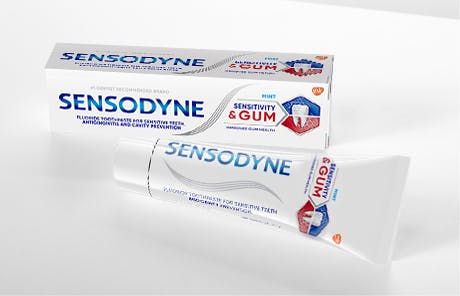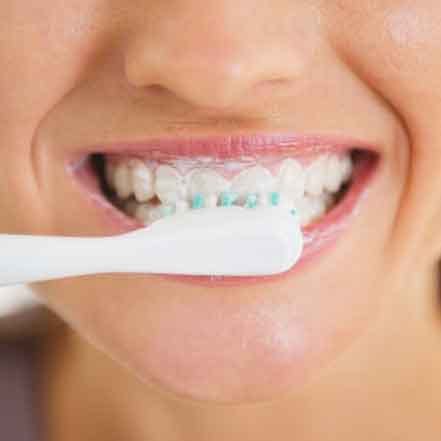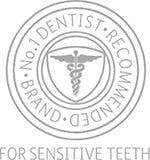Sensodyne Toothpaste Products
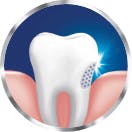
Helps to Reduce the Pain of Sensitive Teeth*

Contains fluoride to protect against cavities*

Breath Freshening
*With twice daily brushing
Find your next toothpaste by using our easy-to-use product filter feature. Select one (or several) qualities you’d like in your next toothpaste, and then click “Get Results.” Voilà! You’ve found your future favorite (or favorites). Whether you’re looking for a toothpaste that provides 24/7 sensitivity protection**, a sensitive toothbrush, or are looking for a fresh feeling with mint toothpaste, you can find a Sensodyne product that will suit your needs. When you’re ready, click on the product itself to learn more and make a purchase.
**With twice-daily brushing
Product filters
Sensodyne Clinical White
Sensodyne Clinical White features clinically proven technology to whiten and polish teeth by removing surface stains, even in hard-to-reach areas. This enamel-safe toothpaste actively whitens and prevents stains with 24/7 sensitivity protection.^^ Get whiter, brighter teeth with Sensodyne Clinical White.^
*Vs. a non-whitening toothpaste with twice daily brushing **as shown in an 8 week study ^after 8 weeks twice daily brushing ^^with twice daily brushing
Sensodyne Clinical White Intensive Clean
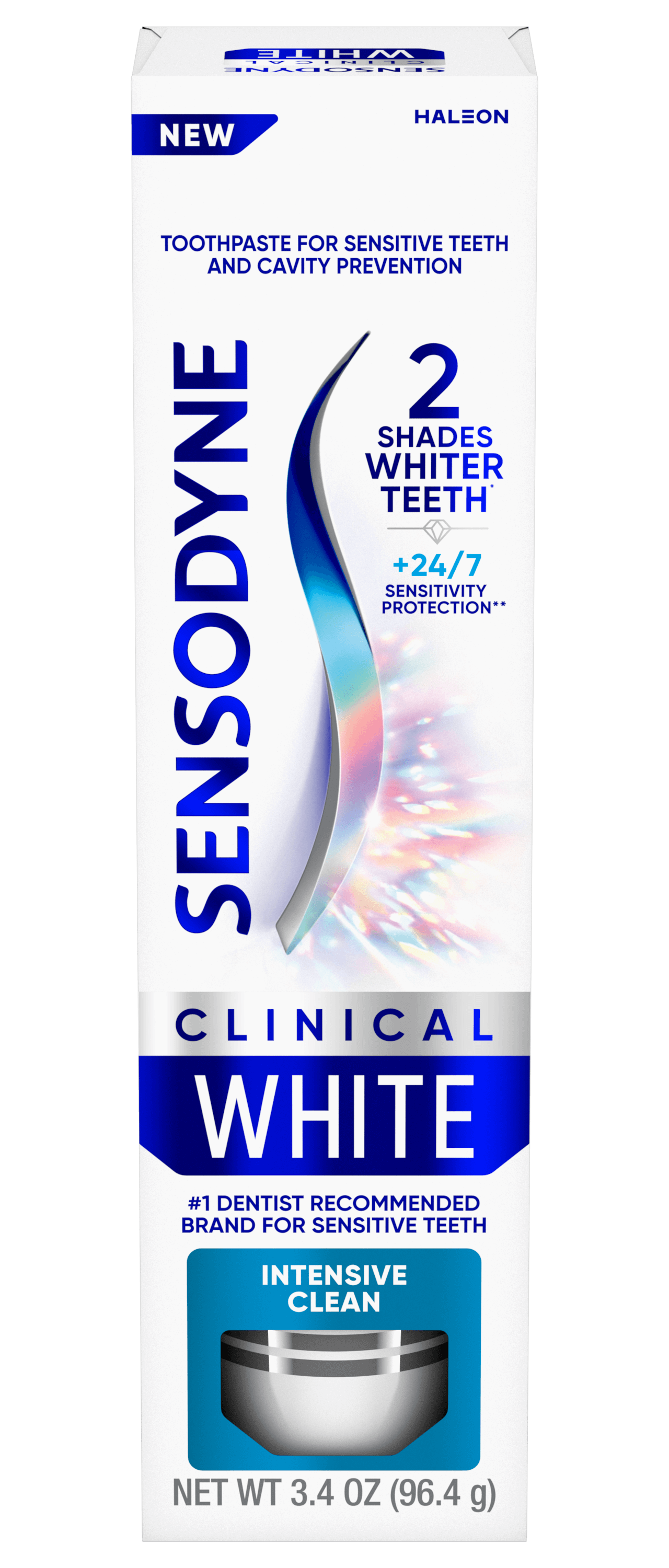
- - 2 shades whiter teeth*, 24/7 sensitivity protection^ and enamel safe
- - 2x shinier teeth**
- - 7x better cleaning through stain removal**
- - Great tasting and freshens breath
Sensodyne Clinical White Stain Protector
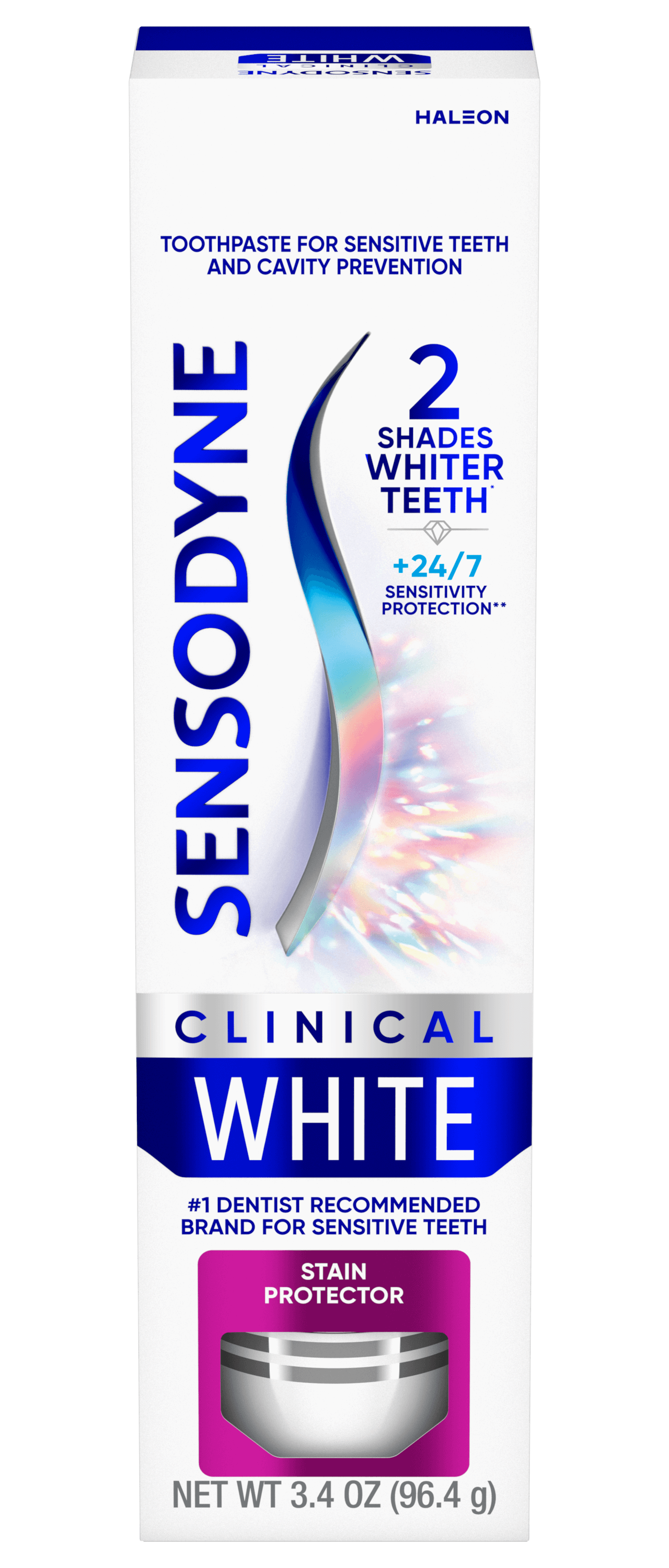
- - 2 shades whiter teeth**, 24/7 sensitivity protection^^ and enamel safe
- - Removes 50% more surface stains*
- - Helps protect teeth from future stains
- - Leaves an extra fresh feeling
Sensodyne Clinical WhiteEnamel Strengthening
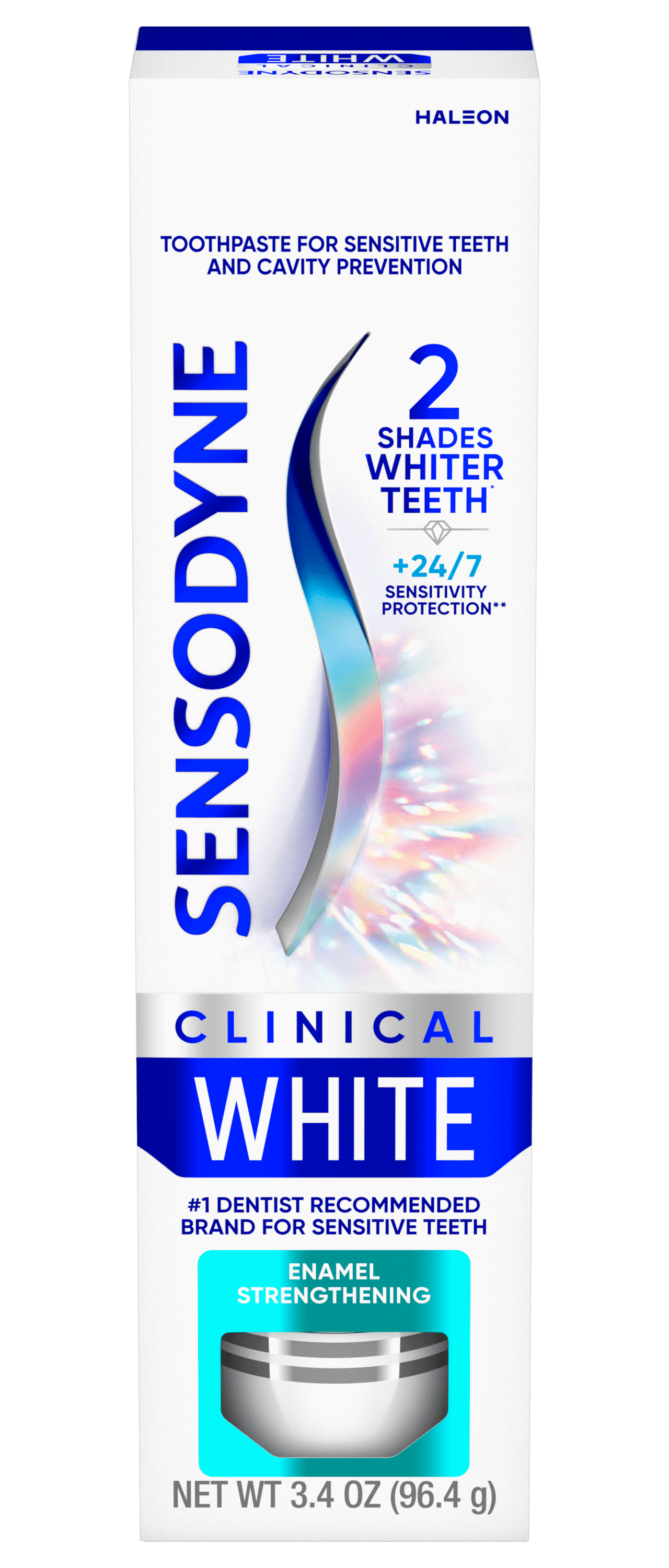
- - 2 shades whiter teeth** & 24/7 sensitivity protection^^
- - Enamel safe and enamel strengthening
- - Gentle enough for every day use
- - Leaves your breath minty fresh
Sensitivity & Gum Toothpaste
This dual action toothpaste can help relieve sensitivity and improve gum health through effective plaque control. Sensodyne Sensitivity & Gum is a twice daily use toothpaste that contains a clinically proven ingredient to help control bleeding gums. It helps you deal with both these concerning problems with one specialist toothpaste.*
*With twice daily brushing

- - Daily Triple Action for sensitivity relief, gum protection & enamel strength
- - Helps restore gum health
- - Fights gingivitis
- - Provides a cooling sensation on gums
Sensitivity & GumWhitening

- - Helps to reduce the pain of sensitive teeth*
- - Effectively removes surface stain to restore the natural whiteness of your teeth
- - Contains fluoride to prevent caries
- - Freshens breath
Repair & Protect Deep Repair Toothpaste
Sensodyne Repair and Protect Deep Repair toothpastes start to build a reparative layer from the first day over and within dentin tubules*^^ and helps to reduce the pain of sensitive teeth.* Sensodyne contains fluoride to strengthen the teeth and protect against decay.
*With twice daily brushing ^as shown in an in vitro study ^^ Sensodyne Repair and Protect Deep Repair toothpastes are intended for relief of occasional dentin hypersensitivity that occurs when sensitive teeth are exposed to hot or cold substances. It contains stannous fluoride, a well-established, effective tooth desensitizer with remineralization properties.
Repair & Protect Deep RepairWhitening

- - Provides effective protection for your sensitive teeth*
- - Deeply repairs^,^^ so you can enjoy life without the worry of sensitivity
- - Helps keep gums healthy*
- - Fights cavities
- - Whitening action
- - Daily repair toothpaste*^^
- - Freshens breath
Repair & Protect Deep Repair Extra Fresh

- - Helps to reduce the pain of sensitive teeth*
- - Daily repair toothpaste*^^
- - Helps keep gums healthy*
- - Freshens breath
- - Fights cavities

- - Deep repair for sensitive teeth^,^^
- - Whitening action
- - Helps keep gums healthy*
- - Freshens breath
- - Contains fluoride to prevent cavities
Sensitivity & Gum Soft Toothbrush
Sensitivity & Gum Soft Toothbrush offers seven benefits designed for people with sensitive teeth and gums including 2.5x better pressure control.^ This sensitive care toothbrush is designed for your oral care needs, helping you brush hard-to-reach areas, while safeguarding against over brushing.
*In laboratory tests compared to a standard flat trim toothbrush ^vs. standard neck in laboratory testing
Sensitivity & Gum Soft Toothbrush
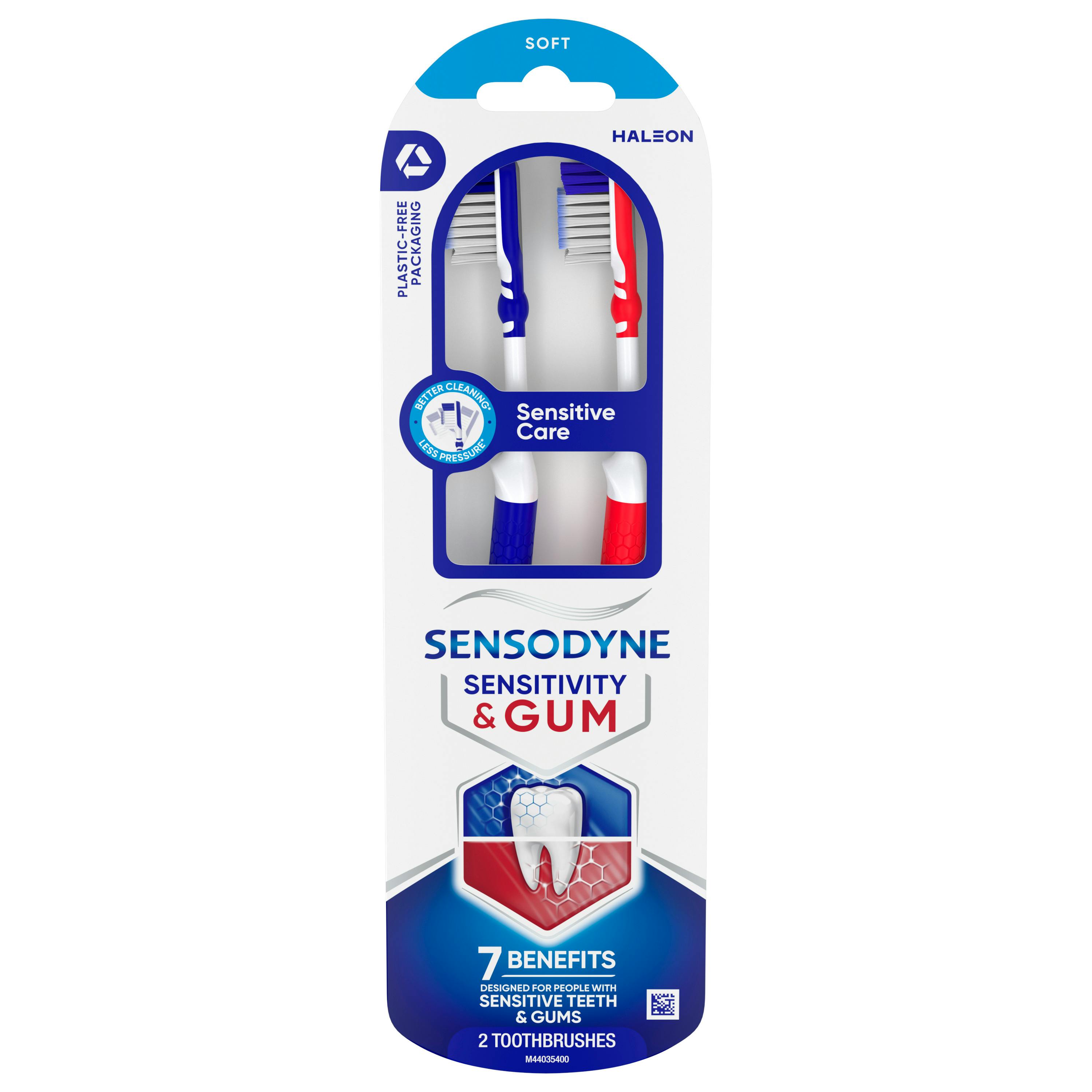
- - 3x better reach along gumline*
- - 2x better interdental cleaning*
- - Compact head for hard to reach areas*
- - Removes plaque*
- - Protects against over brushing*
- - 48% better cleaning*
- - Gentle stain removal*
Rapid Relief Toothpaste
Sensodyne Rapid Relief toothpastes help you face up to sensitivity fast.* Their unique formulation with stannous fluoride builds a protective barrier over sensitive areas of your teeth^, so you can beat sensitivity pain fast*—and keep it from coming back.^
^With twice daily brushing *Significant pain relief in 3 days with twice daily brushing
Rapid ReliefWhitening

- - Beats sensitivity pain fast*
- - Gentle on teeth
- - Helps maintain healthy teeth and gums^
- - Helps whiten enamel and prevents staining^
Rapid Relief Mint

- - Beats sensitivity pain fast*
- - Strengthens enamel^
- - Fights cavities
- - Cleans and freshens your mouth
Rapid Relief Extra Fresh

- - Beats sensitivity pain fast*
- - Freshens breath
- - Fights cavities
- - Strengthens enamel^
Essential Care Toothpaste
Sensodyne Essential Care toothpastes work inside the tooth to help calm the nerves*, and build 24/7 sensitivity protection with twice daily brushing. They also provide the benefits of a regular toothpaste*, fight cavities and leave a fresh and clean mouth feel.
*With twice daily brushing

- - Helps whiten teeth*
- - Prevents tartar build-up*
- - Daily protection from sensitivity*
- - Does not contain SLS

- - Helps bring back the natural whiteness of your teeth*
- - Contains fluoride to prevent caries
- - Deep clean toothpaste*

- - Helps protect against tooth sensitivity*
- - Minty taste
- - Provides the benefits of a regular toothpaste*

- - Helps whiten teeth*
- - Daily protection from sensitivity*
- - Helps reduce tartar build-up*
- - Leaves your mouth feeling fresh and clean
- - Does not contain SLS
Complete Protection Toothpaste
Sensodyne Complete Protection toothpastes provide clinically proven relief and daily protection for sensitive teeth.* They help control dental plaque*, help to maintain healthy gums*, can help whiten enamel* and provide effective protection for your sensitive teeth with twice daily brushing.
*With twice daily brushing
Complete Protection Extra Fresh

- - Helps whiten enamel*
- - Helps maintain healthy gums*
- - Formulated to help prevent staining*
- - Helps prevent gingivitis*
- - Helps control dental plaque*
- - Strengthens enamel
- - Fights cavities*
- - Leaves your breath feeling fresh

- - Helps whiten enamel*
- - Helps maintain healthy gums*
- - Formulated to help prevent staining*
- - Fights cavities*
- - Helps control dental plaque
- - Leaves your breath feeling fresh
Pronamel Toothpaste
Pronamel toothpastes are specially formulated to help protect against the effects of acid erosion* with twice daily brushing. Pronamel anticavity toothpaste provides the benefits of a daily toothpaste* including fresh breath.
*With twice daily brushing ^With a healthy diet. Brush twice daily to keep up protection.
Pronamel Intensive Enamel Repair Extra Fresh

Write a Review
- - Helps actively repair acid-weakened enamel
- - Offers advanced protection against the effects of acid erosion
- - Freshens breath
- - Helps keep enamel protected from sensitivity
Pronamel Intensive Enamel RepairClean Mint

Write a Review
- - Helps to actively repair acid-weakened enamel
- - Offers advanced protection against the effects of acid erosion
- - Freshens breath
- - Helps keep enamel strong and protected from sensitivity
Pronamel Intensive Enamel Repair Whitening

Write a Review
- - Helps actively repair acid-weakened enamel
- - Freshens breath
- - Helps keep enamel strong and protected from sensitivity
Pronamel Active ShieldWhitening

Write a Review
- - Continues to work even after brushing
- - Leaves whole mouth feeling clean & fresh
- - Provides 24 hour cavity protection^
- - Helps to remineralize acid-weakened enamel due to dietary acids
Pronamel Active ShieldFresh Mint

Write a Review
- - Helps to remineralize acid-weakened enamel due to dietary acids
- - Continues to work even after brushing
- - Makes teeth feel clean
- - Provides 24 hour cavity protection^

Write a Review
- - Makes enamel more resilient
- - Helps protects your teeth against the effects of acid erosion
- - Helps clean and freshen your mouth

Write a Review
- - Makes enamel more resilient
- - Helps protects your teeth against the effects of acid erosion
- - Helps clean and freshen your mouth

Write a Review
- - Helps make your enamel stronger and more resistant to the effects of dietary acids
- - Helps keep your teeth strong and healthy
- - Helps stop the twinges of sensitive teeth*
- - Does not contain SLS

Write a Review
- - Helps make your enamel stronger and more resistant to the effects of dietary acids
- - Helps keep your teeth strong and healthy
- - Helps stop the twinges of sensitive teeth*
- - Does not contain SLS
How Sensodyne Products Help with Preventing Cavities and Teeth Sensitivity
Sensodyne toothpastes provide effective protection for your sensitive teeth.* As the #1 dentist recommended brand for sensitive teeth, all Sensodyne toothpaste products contain fluoride to help strengthen the teeth and protect against decay.*
With a wide range of options, from mint toothpaste to sensitive care toothbrushes, Sensodyne has products suitable for all your oral hygiene needs. Protect your sensitive teeth and prevent cavities with Sensodyne products today.
*with twice daily brushing

Save
Get Your Coupon

